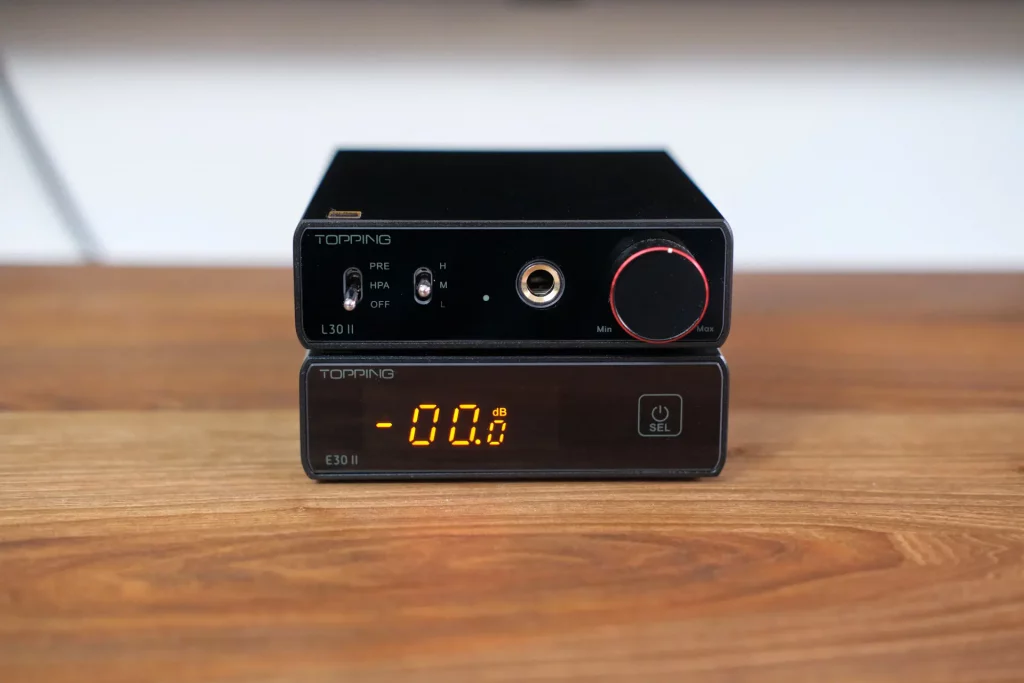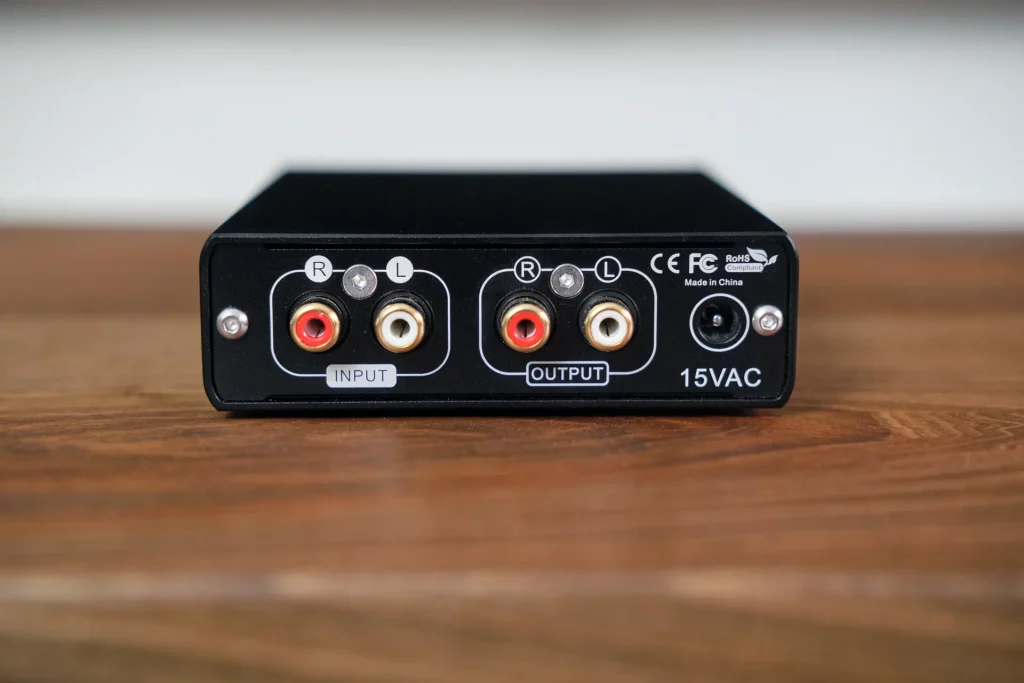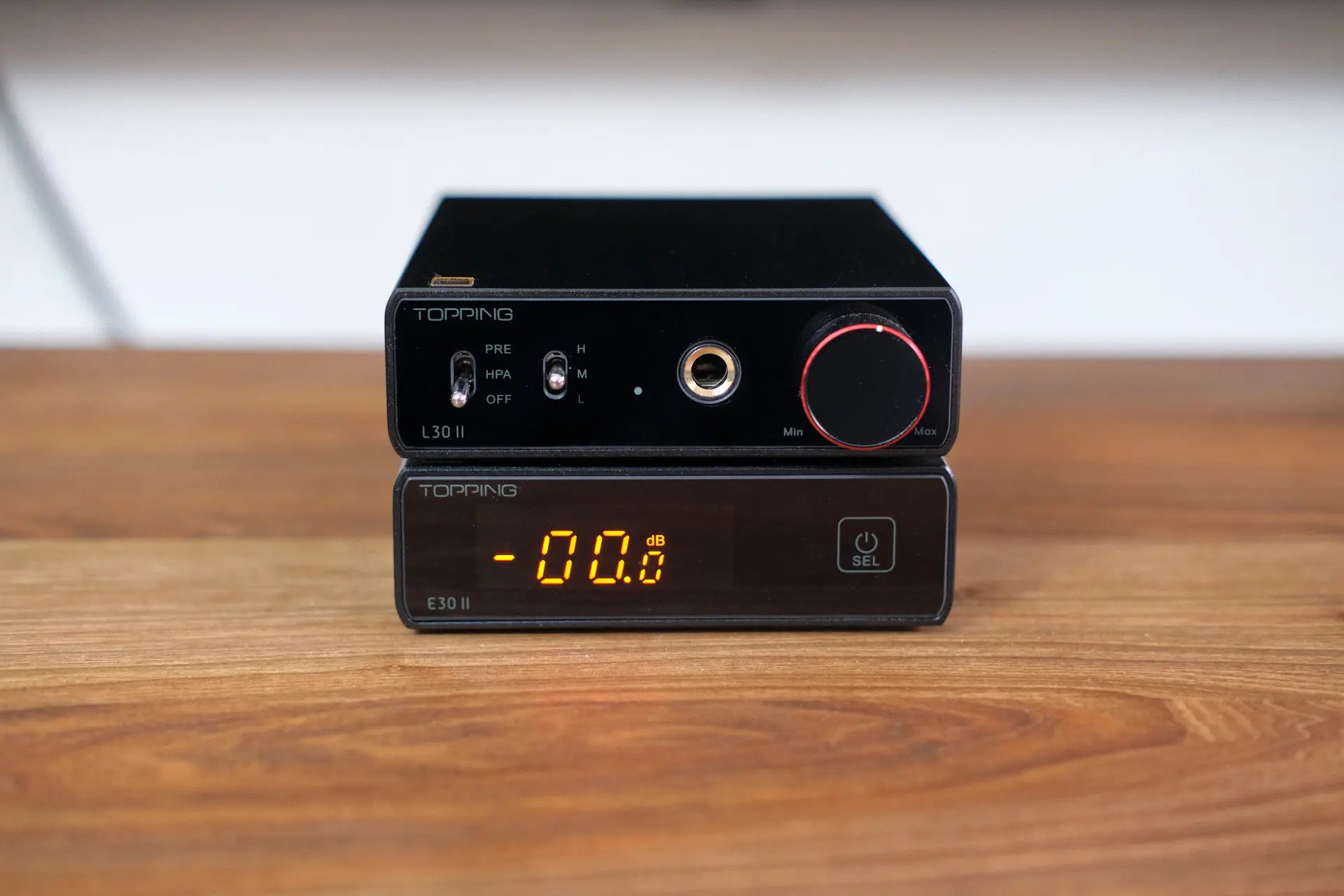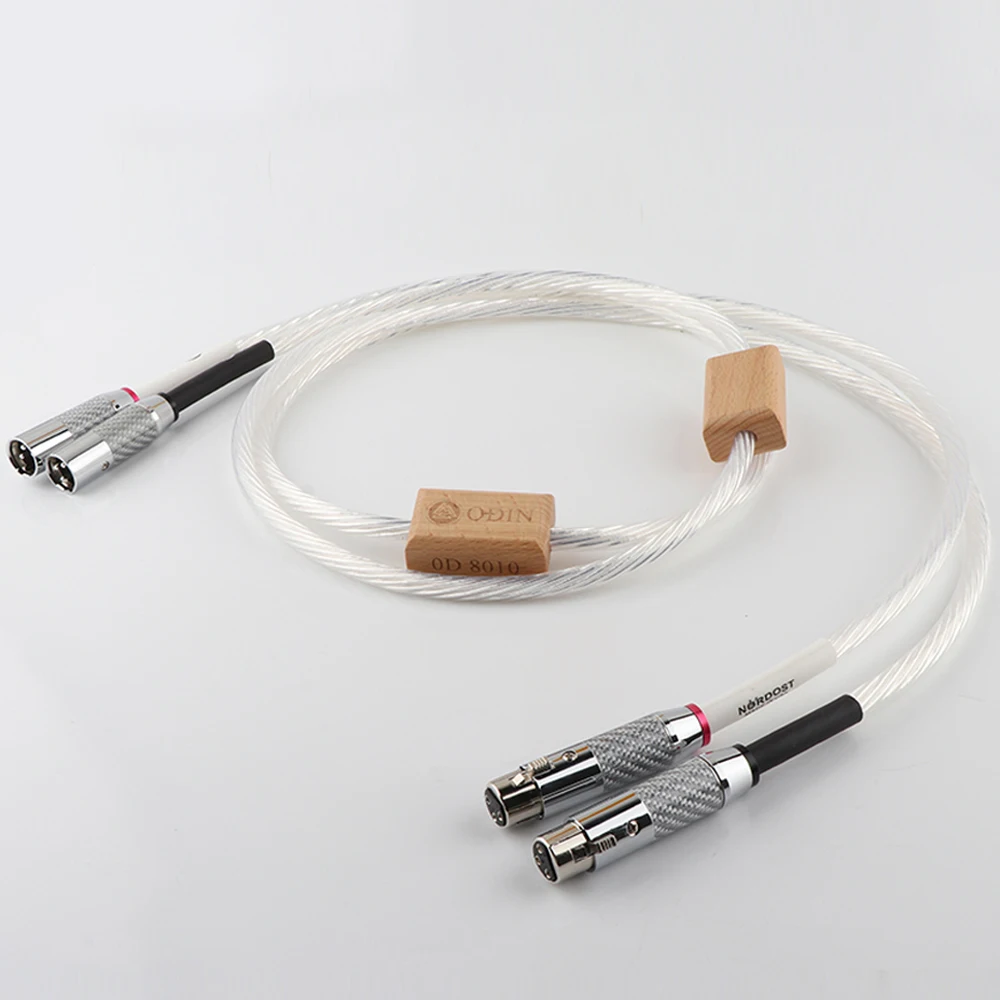Topping L30 II is the latest revision of the most affordable head-amp in the brand’s lineup. Its overall design and dimensions are meant to match Topping’s capable entry-level DAC E30 II perfectly. But how much performance can you expect from this affordable headphone amplifier? Let’s find out.
Build
The topping L30 II is made mostly of aluminum that comes in a black or silver finish. The front panel is black on both versions though and it’s some sort of acrylic glass that looks slick. If I were to nitpick, I’d prefer for the pointer on the volume knob to be a little more visible. Aside from that the unit is built and finished to high standards.
Features and Connectivity
There are two switches, a 6.35 mm headphone jack, and a volume knob in the front. In the back, we find a 15 VAC power connector, a pair of RCA inputs, and a pair of RCA outputs. The volume knob controls the level on both headphones out and RCA output and this means Topping L30 II can be used as a preamp. You can select either head-amp or preamp mode, but both outputs can’t be deployed simultaneously.
Topping lets you select a gain level in three steps, meaning you have a choice between -14 dB, 0 dB, and +16.5 dB. The first one can be useful if you tend to use highly sensitive earphones, for example, but most users will probably keep it on 0 or +16.5 when paired with bigger cans.


Technology
The Topping L30 II features Ultra-High Performance NFCA modules, using the same NFCA (Nested Feedback Composite Amplifier) module from the brand’s flagship A90. High output current drive capability is supposed to allow L30 II to drive low-impedance headphones with ease. Output impedance on headphone out is less than 0.1 Ohm. In preamp mode, output impedance is as low as 20 Ohm, which Topping claims to be widely suitable for various devices.
The maximum output power of L30 II is a respectable 3.5 W @ 16 Ohm. Unlike the original L30 which needed 3.0 V on its input to achieve that power, version II can deliver it when it’s fed with much more common 2.0 V. Output voltage goes up to 37 Vpp which is very high and important for driving high-impedance headphones well.
Sound
Topping L30 II sounds clean and precise. The bassline is deep, punchy, and well-controlled. Midbass is equally energetic and almost thick, which is a change of direction compared to the more restrained nature of the original L30. As a result, vocals and instruments are lent some fullness and thickness. The tone texture is revealed to a very satisfying level. The highest spectrum feels well-extended, smooth, and not too prominent. If anything, L30 II presents the highest frequencies in a slightly tamer manner.
The soundstage is pleasantly wide and relaxed. All instruments are nicely layered and separated in front of a dark background. Thanks to a healthy amount of clean power, dynamics are respectable too and Topping L30 II can sound quite punchy and exciting when asked for.
All these qualities considered, Topping L30 II is probably as good of a head-amp as you can get at this price point.
Comparisons
Topping L30 comes to mind as the most logical comparison. The original sounded similarly revealing in high frequencies but with a leaner tonality and flatter sounstaging. L30 II actually improves on these shortcomings, sounding weightier in the bass and midbass section, which lends boldness to the whole sound too. But it adds a darker background with better layering and a more three-dimensional presentation. All of this makes L30 II a noticeable improvement over the original L30.
SMSL SH-6 is slightly more affordable and offers a similar feature set. SH-6 sounds warmer in the bass, midbass, and midrange, and slightly darker in the highest spectrum. I quite liked its full-bodied and punchy presentation but I have to say that L30 II is doing all that but with even greater clarity and separation, with a slightly darker background as a bonus too. So if you already have SH-6 by any chance, don’t worry, it hasn’t been destroyed by L30 II. That said if you’re currently in the market for a new head-amp, I would recommend paying that small difference and going with L30 II.
Conclusion
Topping L30 II is a worthy successor to the popular budget model. Built and style haven’t changed but those really didn’t need changing. The price stayed the same while performance took a decent upgrade – what’s not to like about that?
| TOPPING L30 II – CHARACTERISTICS |
|
Output up to 3500 mW ×2 @ 16 Ω and 560 mW ×2 @ 300 Ω |






Hi!
I would like to note that your info is inaccurate.
For older L30s you indeed needed the higher DACs voltage. However, in the mk2 l30 version, this was limited to 2V, so it will deliver maximum power at 2.0 Volts. (3,5 W @ 16 Ohm)
Thanks for bringing it to my attention. I’ll correcti it.
Have u had any experience with the Aune X7s? I have it + Sennheiser hd 650. But on high gain balanced I get very less volume dial. It gets too loud too soon. and i read somewhere the hd 650 needs higher voltage swing so i guess high gain is ideal. Medium gain makes it sound less lush so i want an amp that can run the hd 650 on high gain without underpowering Or overpowering it. Do you think that the Topping L30ii is a sonic upgrade over the Aune X7s?
I don’t think I ever had a chance to try X7s. Your problem with the volume getting too loud quickly has two parts connected into one outcome. High gain adds to the problem by leaving less room for gradual shifts, and potentiometers are usually logarithmic (instead of linear) because most people prefer to have bigger loudness sooner on the dial position. That makes them feel like the device is more powerful. In reality, it doesn’t have anything with power but with how the potentiometer and gain are tuned.
The quick and dirty solution in your case would be to lower the volume somewhere before the amp (on your DAC, PC, etc.) so it leaves you more wiggle room on the amp itself. Another one would be to look for another amp that has high gain you enjoy but linear volume control that’s less sensitive to small movements.
Hi.Between Topping L30 mk2 and A50s for HIFIMAN 400SE which one would you prefer?
L30 II for my taste because it has fuller tonality. A50s is on a thin and bright side of things, which I personally wouldn’t pair with Hifiman.